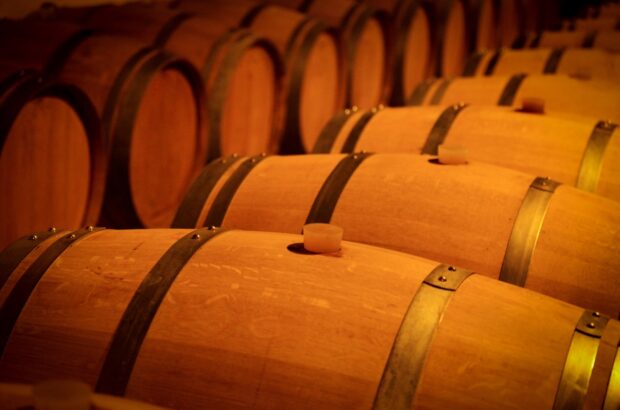The humble whitewashed village of Freixial de Cima north of Lisbon, Southern Portugal is just about the last place that you would expect to come across a bottle of Chapoutier’s Hermitage Le Pavillon. But then it’s not every day that you meet a man like José Bento dos Santos. An industrialist whose passion for food and wine has turned to a fervour, Bento dos Santos has amassed one of the finest private cellars in Iberia. His enthusiasm for the Rhône extends into his vineyards at Quinta do Monte d’Oiro (Hill of Gold) where in 1992, he began planting Syrah. At the time it was a brave (some might say foolhardy) move in an area hardly famed for the quality of its wine.
Portugal’s white wines
Poor yields
For many years Estremadura and the Ribatejo moved with the market, selling wine in bulk to just about anybody in need of volume. In the mid-19th century it was the French who bought heavily, shipping Portuguese wine to augment their miserable yields in the wake of phylloxera. When production in Bordeaux and Burgundy recovered, the growers of central-southern Portugal lost a lucrative market and turned to distillation instead. White grapes supplanted red and every major quinta was equipped with a still to produce the grape spirit used to fortify port. After the Second World War the emphasis shifted overseas again and huge cooperative wineries were built to slake the thirst of Portugal’s African colonies.
This came to an abrupt end in the aftermath of revolution in 1974 when the colonies went their own way, and in the late 1970s producers in Estremadura were reduced to selling wine to the Soviet Union for a fraction of an escudo per litre. ‘By 1981,’ says Miguel Catarino of Quinta da Cortezia, ‘we were so behind the rest of the world that no one knew what they were doing.’
The solution
The solution was to start again from scratch, and this is exactly what has happened at a number of properties including Quinta do Monte d’Oiro and Quinta de Cortezia. In fact Miguel Catarino was so determined to wipe the slate clean that, at the outset, he refused to employ anyone with pretensions to know about wine.
Portugal: moving up in the world
It has been a rapid learning curve, accelerated by generous funding from the European Union. High-yielding hybrids planted back in the bad old days have been uprooted and replaced by leading Portuguese varietals (Touriga Nacional, Trincadeira and Tinta Roriz), along with a smattering of Cabernet Sauvignon, Merlot and Syrah. Terroir was a word that was hardly uttered, and rarely understood a decade ago, but is well on the way to being rediscovered as vineyards retreat to the hills, (see panel overleaf).
But in Portugal’s quest for quality, it is all too easy to overlook the need for quantity if the country is to remain a significant player on world markets, and Estremadura and the Ribatejo are capable of both. This has not escaped the attention of José Neiva Correira whose family own 250 hectares (ha) of vineyard in Estremadura between Torres Vedras and Alenquer. Land holdings in central to southern Portugal are significantly larger than those in the north, in turn enabling lower production costs. Mechanised harvesting, virtually impossible in the mountainous north, is now commonplace on the flat lands of the Ribatejo where yields from grape varieties such as Fernão Pires reach 90hl/ha.
Neiva’s approach
José Neiva is currently restoring a huge estate, Quinta Fonte Bela, near Cartaxo in the Ribatejo. The vast late-19th century adega (known locally as ‘the cathedral’) used to vinify grapes from 1,500ha of vines. Now that the vineyard at Fonte Bela has dwindled to just 65ha, it is being converted to become a major bottling centre for Neiva’s wines grouped under the name DFJ Vinhos. The range (currently standing at 36 wines) is overwhelming and makes the most of Portugal’s indigenous grape varieties. Vale de Rosas is a fresh, honeyed dry white from the local Fernão Pires, whereas Grand’ Arte draws on Alvarinho and Chardonnay to recreate the crispness of a cox apple.
Reds include Senda do Vale, a vibrant, sappy Ribatejano red made with spicy Trincadeira and currant-like Cabernet from the Fonte Bela estate. Manta Preta from Estremadura is a soft, smooth blend of Touriga Nacional and Tinta Roriz with unusual concentration at this price level lending a finish akin to milk chocolate.
Neiva justifies his approach to wine with the his own parable: ‘The world has two classes, rich and poor. There are more poor than rich and my intention is to make good wines for the poor – the best wines drunk by as many people as possible.’
Up the lane in Freixial de Cima, José Bento dos Santos is definitely appealing to the rich. His Syrah vines yield just 20hl/ha and his wine, Quinta do Monte d’Oiro, is aged for 15 months in new French oak. The result is seductively ripe, peppery red with bitter chocolate concentration with a hefty 14% alcohol. It is also broader, sweeter and without the rapier-like focus of Chapoutier’s 1995 Le Pavillon, which Bento dos Santos uncorked to compare. Nonetheless, it all goes to show that there’s metaphorical gold in’dem there hills.












